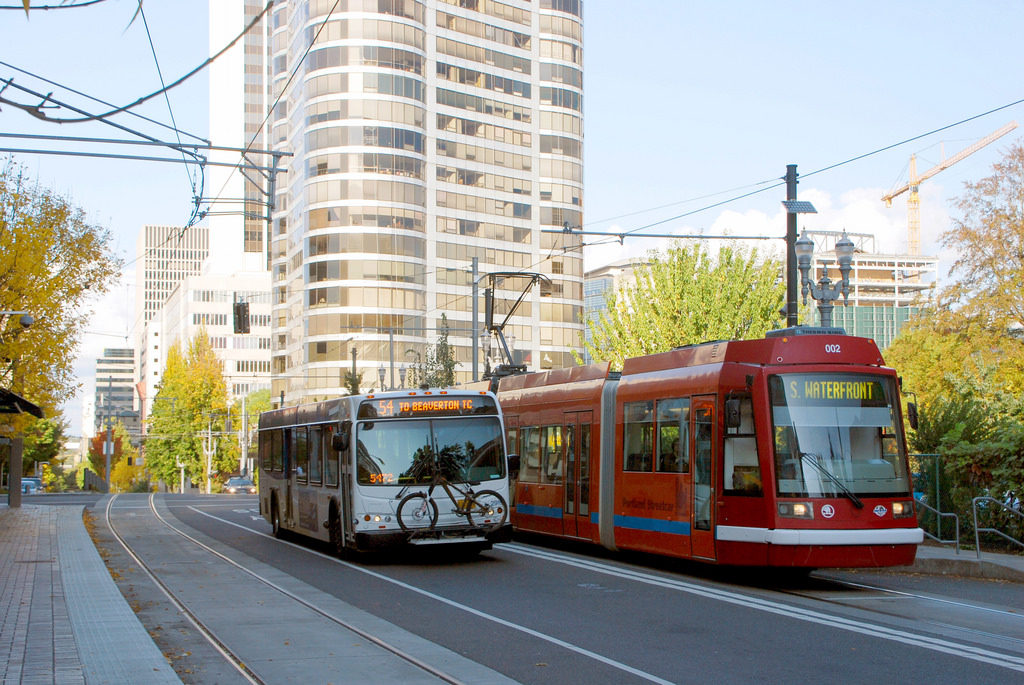Homes with better transit access command higher prices, especially in cities with good transit.
Our friends at Redfin, the real estate data and analytics company, have an interesting new report exploring the connection between transit access and home prices. Redfin computes and freely publishes a Transit Score for all of the nation’s houses. Transit Score is a sibling of Walk Score, and is a measure of the number and frequency of bus, train and other transit lines that run in close proximity to a given property. The closer your house is to a bus stop or train station, and the more lines that serve that stop, the higher your Transit Score.

Their new study uses house price data from 14 cities to look at the relationship between home prices and Transit Score. Redfin uses a workhorse economic tool, called hedonic modeling, to tease out the contribution of different aspects of a home (its size, number of bedrooms, bathrooms, age, neighborhood characteristics, etc.) to the home’s sales price. What they find is that, after controlling for these other observable characteristics that we know influence home values, that each additional point of Transit Score is associated with an average of about $2,000 in higher home value. They’ve modeled the impact of an additional point of Transit Score on different cities, and shown how it relates to local housing prices.

The value of accessibility
If that finding sounds a bit familiar, it should. We, and separately later, others at Zillow and Redfin, have replicated this kind of analysis looking at the connection between home values and Walk Score. Although there’s been a bit of variation in the exact details, all three researchers have found a statistically significant connection between home prices and walkability. The more walkable neighborhood a home is located in, the higher its value tends to be.
So does this mean that you can add the value associated with a point of Transit Score to the increase value associated with Walk Score? Probably not. First, this Redfin study looked only at Transit Score, and not at Walk Score, so statistically, it can’t say anything about the separate (or joint) impacts of the two different measures. Second, and more importantly, we know that there’s a pretty strong correlation between transit access and walkability. Using transit and walking are strong complements (most bus and train riders are also pedestrians at both ends of their trip), and transit lines tend to provide higher levels of service to denser and more walkable neighborhoods. As a result, given the overlap between walkable neighborhoods and transit-served ones, its probably difficult, and maybe impossible, to tease out the separate contribution of the two factors.
While that may be frustrating statistically, its probably much less of a problem for policy. Given the complementarity between walking and transit, we probably want to build neighborhoods that foster both kinds of transportation. In effect, measures like Walk Score and Transit Score (and a third sibling, Bike Score) are actually alternate ways of measuring a home’s accessibility: how easy it is to reach a range of common destinations. The greater the level of accessibility, by all these modes, as well as by automobile, the greater the value a home is likely to command.
Is transit worth more in transit-rich cities?
Keeping in mind that some of what is being measured in the Redfin study is the lagniappe from walkability and bikeability being greater in transit-served areas, we thought there was one other interesting aspect of the study’s data. The effect of Transit Scores on home values varied considerably across cities. While the average effect of an additional one point of transit score was to increase home values by $2,000 or between one-half of one percent and one percent in most cities, the impact was noticeably greater in some cities than others. In Boston, where citywide transit grades out at a very high Transit Score of 74, the impact of a point of Transit Score is 1.1 percent. In the cities with the lowest levels of city-wide transit accessibility, the value impact of one point of Transit Score was much less. In Phoenix (citywide Transit Score 32) it was just 0.14 percent; in San Diego (citywide score 37) only 0.18 percent. In Orange County (an outlier), where the citywide Transit Score was just 27, the effect of transit access was negative. This suggests of couple of things: First, in some place (Orange County) access to transit is a disamenity: homes are worth less, all other things equal if they’re near the (relatively few and infrequent) bus lines. Second, and more optimistically, transit is even more valuable in cities where the whole transit system works well. This suggests a kind of network externality: If a city has a good, well-connected transit system, access to transit has an even bigger impact on an individual house’s value.
This latest research is another reminder that consumers place a positive value on city living. Neighborhoods that are walkable, have great transit access, and are bikeable command higher prices because consumers value them more that places without these characteristics. Even though we face some statistical obstacles to separating out the different contributions of each ingredient, its clear that the combination of biking, walking and transit help underpin urban property values. And you can take that to the bank.
